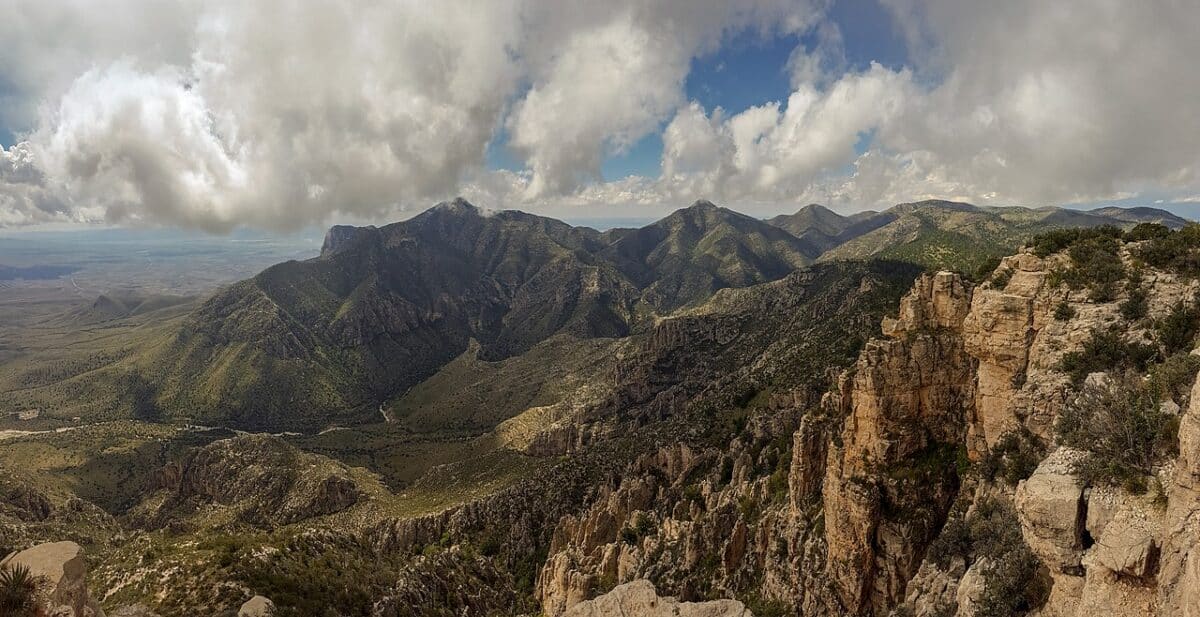
Photo: National Park Service Digital Image Archives via Wikimedia Commons
Guadalupe Mountains National Park in Texas spans over 86,000 acres, offering streams, desert, and mountain landscapes for visitors to explore. The region was once part of a 400-mile long limestone reef in the Permian Sea from which the Guadalupe Mountains were created 10-12 million years ago. Due to petroglyphs and other artifacts found in the park’s caves, archaeologists believe primitive cultures existed in the area some 10,000 years ago. Here are some essential things you should know to help you plan a road trip to this historically and geographically rich place.
New Destinations for a New year: Don’t miss these 2020 events in McKinney, TX
Best months to visit

Photo: Rennett Stowe via Wikimedia Commons
Visit spring through summer to enjoy the park at its warmest and most verdant. The average temperature during this season usually hovers in the 80s. Fall is also a good time to visit if you prefer cooler temperatures since the region is known for its vibrant autumnal hues.
Make sure to wear layers and bring a jacket if you plan on hiking in the higher elevations of the park since the temperature can be 7-10 degrees cooler and a bit windier than in the lower elevations. And bring plenty of water as well as some food with you, since there is no water (or concessions) in the park.
Navigation
The park is located in the western part of the state on U.S. Highway 62/180, 110 miles East of El Paso. Though if you’re starting your adventures in the park’s northern area, near Dog Canyon, take New Mexico State Road 137.
Due to Guadalupe’s vast area and remote setting, the park doesn’t provide public transit or shuttle services. And keep in mind that there are no paved paths in the park so make sure whatever vehicle you choose to transport you and your gear, it can handle rougher roads. The National Park Service also has a few maps worth downloading and/or printing before you go to avoid getting lost due to the lack of cell reception in the area.
Confident Travels: Discover the perks of OnStar technology
Activities and attractions

Photo: Carl Carlson IV
With over 80 miles of trails, it’s easy to see why hiking and backpacking are two of the most popular pastimes at Guadalupe Mountains National Park. For a shorter hike, try the Pinery Trail, the 2.3-mile Smith Spring Trail, or the 3.8-mile Devil’s Hall Trail.
More avid hikers should try their luck conquering the 8.5-mile Guadalupe Peak Trail, which includes the 8,751-foot-high peak the trail is named for (that happens to be the highest natural point in Texas). The 17-mile Bush-Blue Ridge Loop is a good option if you want an extensive route for a longer excursion. You can also explore the Salt Basin Dunes area if you don’t mind risking the chance of encountering a poisonous snake or two.
Wildlife to look out for

Photo: Fredlyfish4 via Wikimedia Commons
The park’s water sources — McKittrick Canyon, Smith Springs, and Manzanita Spring— are great places to view the habitat’s animal residents. Many of these creatures are nocturnal, so you might not see many animals on the trails if you hike by day.
But if you’re lucky, you might catch sight of the following critters: mule deer, coyotes, desert cottontails, gray foxes, squirrels, black-tailed jackrabbits, ringtails, and an occasional elk. Rattlesnakes, short-horned lizards, and other reptiles also call Guadalupe home. And though some visitors have seen black bears, these animals seldom make an appearance in the park.
Whitney Russell is a current resident of Dayton, though her spirit can be found beach-bumming in Puerto Rico (the land of her half-Puerto Rican heritage). When not adventuring through the exciting world of car news, she can be found hiking with her husband and their two dogs, visiting nephews and nieces, discovering new memes, thrifting, decorating, crafting, woodburning, researching random things, and escaping into a great movie. See more articles by Whitney.










